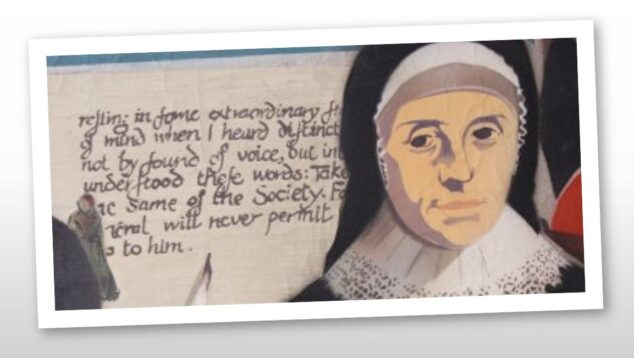Towards the resurrection of the Institute
Paradoxically, Mary Ward’s greatest contribution to the survival of her work was probably her obedient acceptance of its destruction. After Urban VIII’s Bull of 1631, it was ‘suppressed, extinct, rooted out, destroyed and abolished’; she herself was under the authority of the Roman Inquisition for the rest of her life. But between her arrival in Rome in March 1632 and her leaving for Spa and ultimately England, in September 1637, she succeeded in winning Urban’s acceptance of her as a person, trust in her loyalty to the Church, and even to some extent his affection.
There were also certain practical steps that she was able to take. The suppression had meant that most of the former ‘English Ladies’ had returned to their families – but there were about fifty, mostly English, who were unable to do that, dispersed over the different places where their houses had been. Mary sent a petition to the Cardinals, asking for them to be allowed to remain where they were, not ‘doing anything other than live in an exemplary manner as laywomen.’ She herself was allowed to live with the five women still in a rented house in Rome, but gradually others gathered there. They needed something larger and more permanent – somehow, so discreetly that all we know about it comes from coded letters to Mary Poyntz in Munich, she managed by late-1633 to buy a house opposite the basilica of Santa Maria Maggiore, and before long there were twenty-three living in it.
Later, from London in February 1640, she wrote to Pope Urban, expressing great regret at being unable to return to Rome as yet, because of illness, but her determination to travel as soon as possible, to the place ‘where the presence and protection of my supreme Father and greatest Patron will make me truly happy. And one day I hope to be allowed, at those sacred feet, a grace which as yet my sins have made me unworthy to receive: nevertheless, I shall never abuse such great kindness by begging for a thing which is, and may be, distasteful to him.’ Could she be thinking of anything other than permission to resume her mission in some way? Finally, before her death, she named Barbara Babthorpe as her successor, a practical step towards the future. Can we not say that in all these actions God was working through Mary Ward towards the resurrection of her Institute?
Sr. Patricia Harriss CJ









